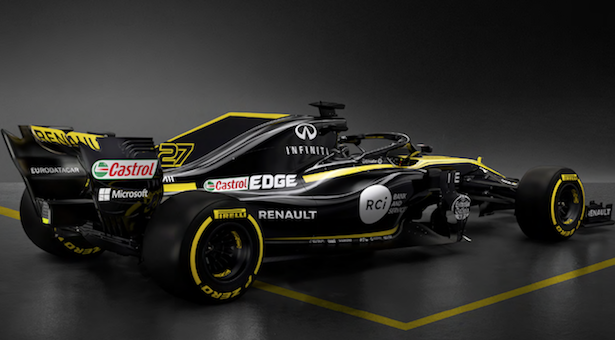
The Renault R.S. 18
There is no denying that Formula One racing is all about aerodynamics and engineering flair but it also requires skillful drivers pushing cars to 220 miles per hour. In recent years, computing prowess has become an integral part of Formula One. Without it, processing the sheer amount of data generated in building, testing and racing the high-speed cars is very costly and time-consuming.
This season saw the Renault Sport Formula One Team really stand out among the rest. While the French automaker supplied engines to other teams in recent years, Renault entered the race in 2016 as a full constructor team. This means that they had to build the entire car and as a result, reorganised their two factories in England and France. Renault also invested in more staff and resources while working out a multi-year plan to win a Formula One championship.
The Renault Sport Formula One racing team rankings have greatly improved; from ninth place in 2016 to sixth place last year. Wrapping up the most recent season at the Abu Dhabi Grand Prix in the United Arab Emirates, Renault ranked fourth overall.
According to Pierre d’Imbleval, Renault Sport Racing chief information officer, “We are at the top of the midfield. What will change the game is how we embrace technology that makes us even more efficient. It’s about being smarter in the way we work.”
Formula One teams are limited to the number of physical test runs they can perform and also how much time they can spend in the wind tunnel. As a result, Renault’s engineers have had to rely more and more on computer simulations. They adapt their cars for every race by running several different digital scenarios through Azure Batch. The objective is to get the modifications just right, identify the best pit stop tactics, tyre combinations and other racing strategies.
Technology And Innovation With Renault Sport Formula One Racing Team
Modern technology makes for impressive scalability in computing power which results in a more cost-effective process. It enables Renault to run many virtual simulations in minutes, something that used to take hours. With so many factors constantly changing and affecting a race strategy, these simulations help the team to quickly reconfigure the car for a particular track.
The Renault Sport Formula One Team is also looking at Microsoft’s artificial intelligence tools to gather vital information from the 30 to 50 billion data points that it generates during every race. While most of the data is normal feedback, the vast amounts of information make it incredibly challenging to know exactly what is normal and what is not. Microsoft’s Azure Machine Learning can accurately interpret any data for abnormalities which allows Renault engineers to spend less time checking data channels manually and focus more on innovation.
They are also studying AI to monitor tyre behaviour which is challenging in itself involving factors such as the tyre compound, track and weather conditions. Tyres are much more than just pieces of rubber and knowing how they behave is tough but Renault believes that AI would be able to accurately identify specific patterns.
Renault has already accelerated their vehicle design and build process which involves a system of 20,000 parts per car. It uses Microsoft Dynamics 365 and Power BI while exploring edge computing for advanced analytics on race-day. Even more impressive is that they’ve implemented Microsoft HoloLens to make 3D simulations which means a much-improved understanding and better collaboration.
This mixed reality project is a result of an initiative that encourages IT employees to spend 10% of their time on innovation. It is a particularly good tactic to try and overcome Formula One racing teams with massive budgets and more staff at their disposal.
As stated by Mark Everest, the team’s information systems development manager, “When you’re not as big as the other teams, it is a really exciting challenge to try and win championships. Technology to me is the only way to do that. It is about innovating and working more efficiently and out-engineering the competitors.”
Success does not happen overnight and innovation requires change. It is sometimes very challenging especially in the risk-averse culture of Formula One racing. Last year 1.4 billion people watched Formula One races so there is continuous pressure on teams to deliver top performances in high-profile races. This is a major contributing factor in making teams resistant to change.
According to Pierre d’Imbleval, the major challenge lies with industry leaders as they need to make people more confident and willing to take risks. Either way, it is clear that advancing technology will continue to play a vital role in Formula One racing but who will come out on top next season?
Follow us on Facebook and keep reading our blogs for more up-to-date information on all the latest developments in the motoring world.

